

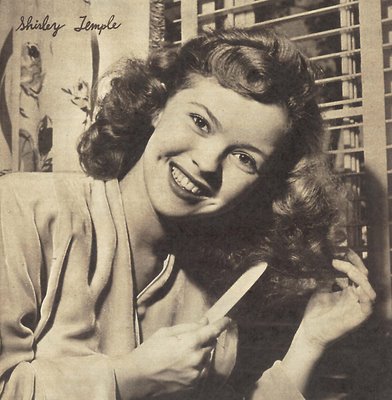 Monday Glamour Starter --- Shirley Temple
Monday Glamour Starter --- Shirley TempleWatching Shirley Temple kid-era pictures may have been akin to having your fingernails pried out with tongs, but she sure grew into some dish, and that’s the girl we celebrate today. The first time I saw Since You Went Away (great movie), I thought she was plenty alright, and it seemed odd that roving bachelor Joe Cotten didn’t cotton to her rather than aging matriarch Claudette Colbert --- but hold everything, Shirley was just sixteen (as in sweet), and Selznick was selling her accordingly. Toward concealing her comely attributes, he instructed studio torture specialists to strap down her expanding bosom (just as they had with our Judy) and dress her out in kiddy ribbons. Some of this plays out like a WWII Lolita, but Shirley was a gal who just couldn’t help it. According to her excellent memoir, Child Star (you can score a used hardbound copy on Amazon for sixty cents), there were any number of randy producers and execs who succumbed to her charms as well. For instance, here’s one that happened when she was twelve, and it was during her first interview with famed producer Arthur Freed. This was 1941, and Shirley was poised to sign with MGM after leaving Fox the previous year. They were sitting alone in Freed’s office when he suddenly "flourished his clothes" (exposed himself), to which S.T. responded with an attack of giggles. Art hadn’t expected that. Needless to say, it cooled his ardor. Could this be the reason Shirley only lasted for one picture at Metro (Kathleen --- shown here)?

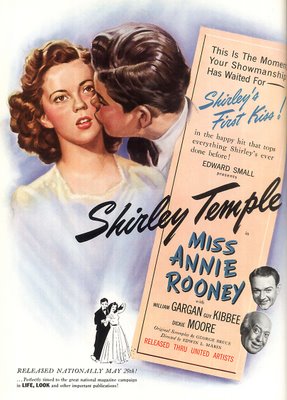
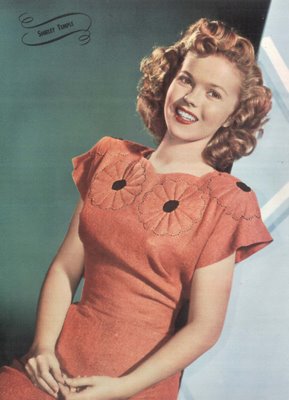
Turns out Shirley was really thirteen when she thought she was twelve. Her mother made the startling confession on her birthday. Just one more deception practiced upon her by caring parents (hold on, Jackie Coogan and Mary Miles Minter, we’re coming!). Shirley’s memories of the dressing rooms at Metro are sure an antidote to that glamour blab Frank lays on us at the beginning of That’s Entertainment. According to her, the place stank. Literally. "A locker-room odor", as she describes it. And you thought you’d like to be an MGM star? Sounds like freshman P.E. (ugh --- lemme go lie down a few minutes). Critics noticed Shirley’s precocity in her next vehicle, Miss Annie Rooney (they classed her "between a paper doll and a sweater girl"), but co-star Dickie Moore, who bestowed her first screen kiss, found her plenty exciting company. So did a masher at the Hollywood Egyptian when Shirley and some of her girlfriends from school went to see I Walked With A Zombie there. This guy had the same idea as Freed, only he figured on letting Shirley’s fingers do the walking. In a crowded theater, yet! Couldn’t he have just been satisfied to watch what must have been a stunning first-run nitrate 35mm print of I Walked With A Zombie projected on carbon-arc equipment? I would have been (sorry, Shirley --- raincheck?).
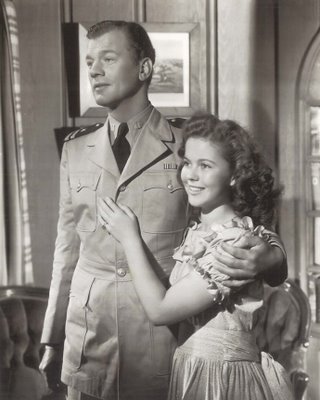


Growing (fast) Shirley spent the best teenage years of her life under contract to David O. Selznick. He first came on to her when she was 17, and again a year or so later. She started bringing a pack of dogs with her for all their office conferences (Dave actually chased her around his desk once!). It was a town full of "copulating tomcats", she said (by the way, the auto-bio was written longhand, so I’d say it’s her voice we’re getting). How could she get any movies made with all these wolves nipping at her well-turned ankles? Besides Since You Went Away, they’re a mostly undistinguished lot. One good one was Fort Apache (shown here). It co-starred new husband John Agar, whom she made the grievous mistake of marrying when she was 17. He was but a child too (though in his twenties, at least), so we boomer sci-fi mavens are more inclined to overlook much of "Sergeant Jack’s" (her appellation) bad behavior during their wedded lack of bliss. Having encountered an elderly Agar at fan shows, he seemed like the sweetest guy in the world. It’s true he dealt harshly with oversized tarantulas, but these were actions appropriate to the occasion. Maybe it was the brain from planet Arous that made him suggest a three-way with a drunken pick-up he once brought home to Shirley. Anyway, things went kaput, but here’s a neat story Shirley tells. Remember the night they raided Bob Mitchum’s reefer party? A detective friend of Shirley’s invited her along for the bust! She declined, only because she didn’t want to get tagged at the scene and risk bad publicity.
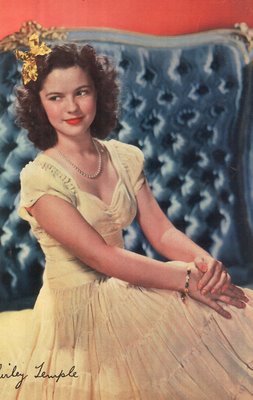
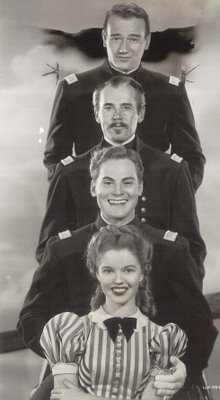
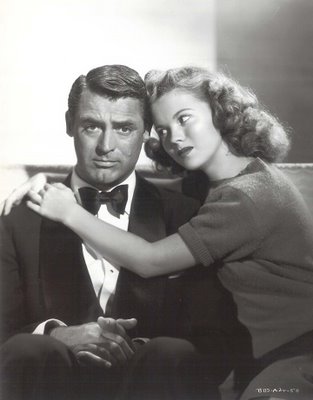
I should mention that Cary Grant tried to have Shirley fired off The Bachelor and The Bobby-Soxer after he walked in on her impromptu, and highly exaggerated, impersonation of him before a howling cast and crew. Selznick made her apologize. When she did, Cary graciously accepted and told her the mimic routine was actually pretty good (guess he just needed to bring the wiseacre kid in line). Another cast member was not so forgiving. Veteran Ray Collins, of Mercury Theatre and Lt. Tragg fame, blew lines to a point where Shirley finally said, "You’re too old to be working." "Bitch…," said he, "Dirty little bitch!" before storming off the set. Oh, and lest we forget the parents. Does it come as any surprise that, out of $3,207,666 in gross earnings for her years of stardom, Shirley ended up in 1951 with $89,000 --- half in cash and half in the value of her old "doll house" she’d lived in with Agar? Slippery explanations from parents and their bookkeeper couldn’t account for such massive losses, but Shirley’s own investigation revealed that her father had misappropriated the better part of the money she’d made with Selznick, in addition to the cash from Fox that had long since been frittered away. For the sake of family harmony, she let it go. Forgiving woman. As things turned out, she got by fine with (successful) marriage number two and retirement from features, though she would come back for television and The Shirley Temple Scrapbook (I think some of those have come out recently on colorized DVD). She was far and away the biggest child star in talking pictures, and she managed to enjoy a happy adult life besides (she’s now 78). How many others can claim that distinction?